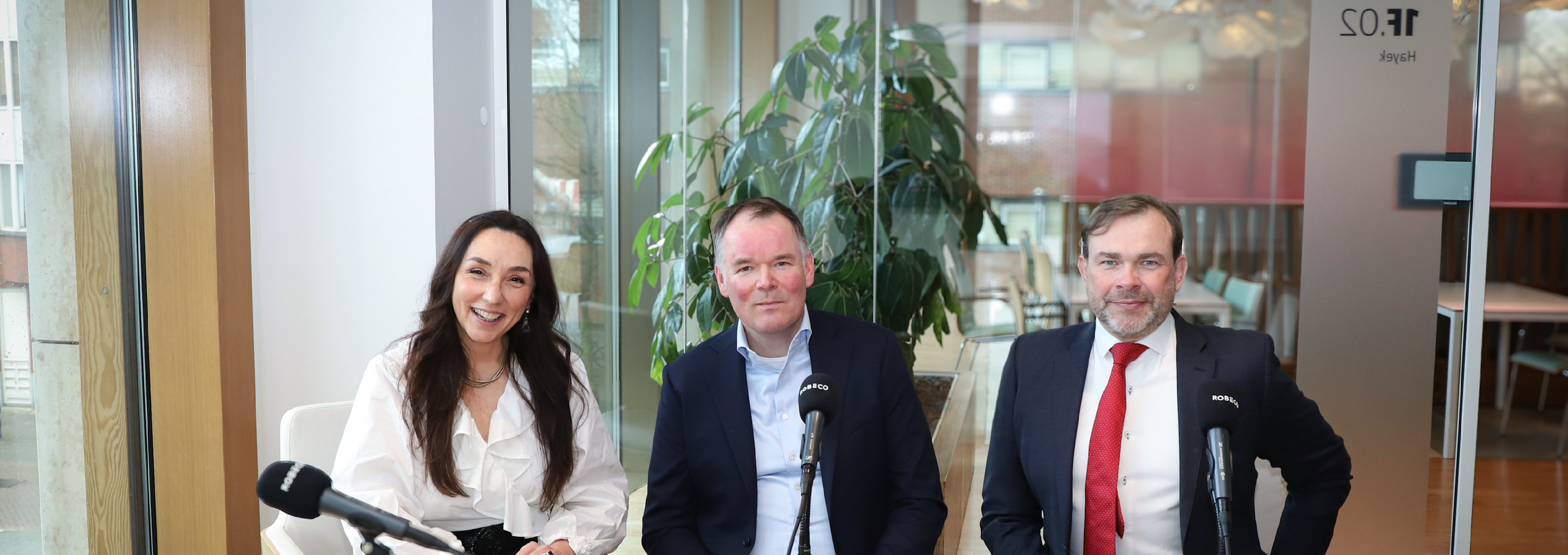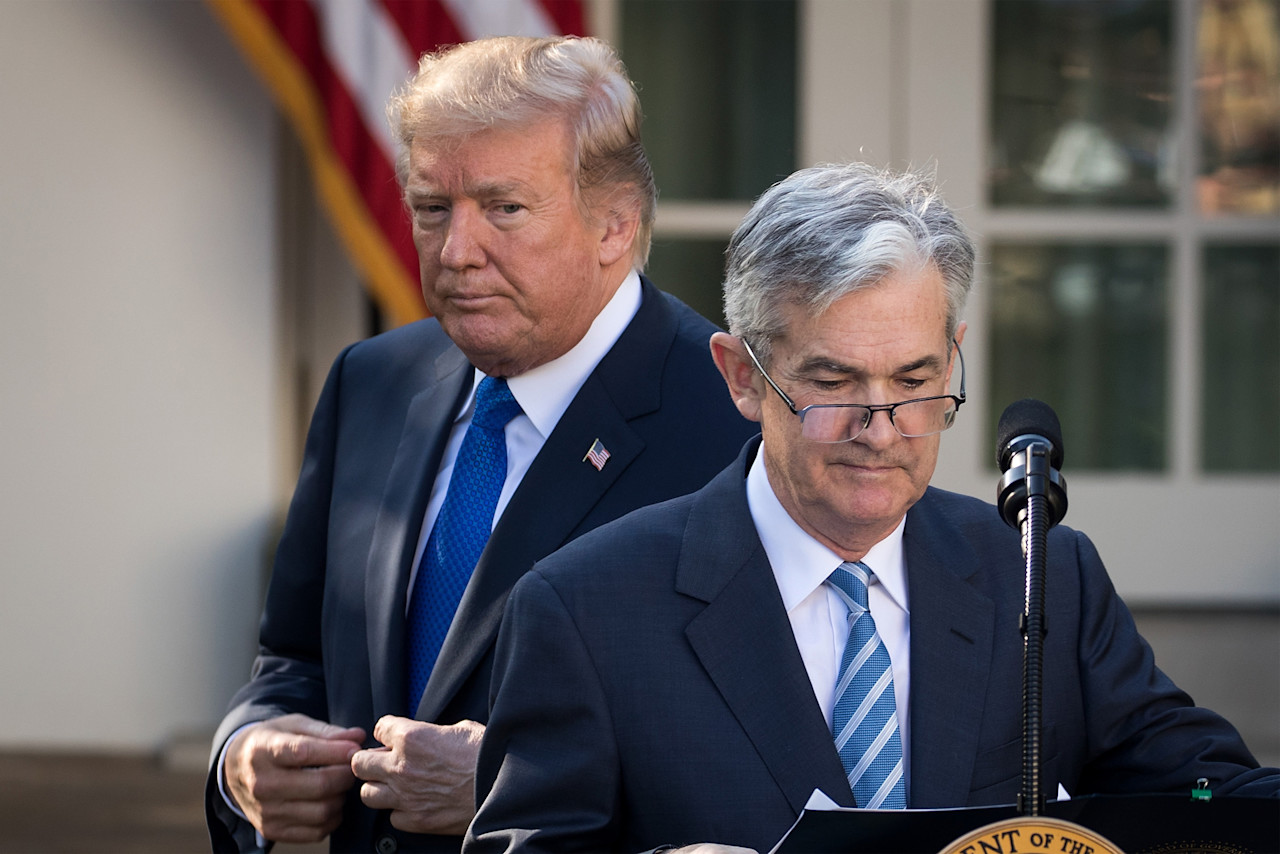

Podcast: Moving from cash to credits
A year ago, many market participants were arguing that 2023 would be a great year for fixed income. Following a series of aggressive policy rate hikes, it seemed at the start of the year to be a great entry point. But interest rates continued to rise for most of 2023, and flows into the asset class turned out to be surprisingly modest. Have we now reached a turning point?
We do not guarantee the accuracy of this transcript.
This podcast is for professional investors only.
Colin Graham (CG): This is even worse for a multi-asset investor because we are just tourists in fixed income. We have to move to inequity markets or currency markets, talking about prices to when we come in to the fixed income world. We have to do a sort of inverse thing right. We’re talking about yields now and not prices.
Welcome to a new episode of the Robeco podcast.
Erika van der Merwe (EM): More or less a year ago, many market participants were arguing that 2023 would be a great year for fixed income. Following a series of aggressive policy rate hikes, it seemed at the start of the year to be a great entry point for bonds, including corporate bonds. But interest rates continue to rise for most of 2023, and flows into the asset class turned out to be surprisingly modest.
Have we now reached a turning point? What exactly is in store for credit in 2024? My guests to enlighten are Evert Giesen. He’s a portfolio manager for global credits at Robeco, and Colin Graham, head of Robeco’s Multi-Asset strategies. Welcome, gentlemen.
Both: Thanks, Erika. Thank you.
EM: Evert, as a credit portfolio manager, just looking back at 2023, it was – we know it was hugely volatile. And yet, you know, there were all these wonderful expectations at the start of the year. What were some of the biggest challenges for you looking back?
Evert Giessen (EG): If you look back at 2023, then the main event from a credit perspective in that year was the writedown of the Credit Suisse CoCos [contingent convertible bonds]. So Credit Suisse was a bank which was in difficult territory for already a few years. We did not have exposure to Credit [Suisse’s] CoCos in our funds. At the moment that the writedown was announced, then we saw a big selloff in CoCo markets and also in broader markets because we had a view that this would not apply to other banks in the industry.
It was the moment to go – to add risk in CoCos in the broader portfolios. But looking at the market reaction, we’ve had several CoCo bonds in the market down 20 points. Adding risk at that point of time is always difficult. But in the end, it paid off. And being contrarian at those points of time – yeah it’s the right thing to do. But sometimes it can be difficult in those volatile environments.
EM: Now, Colin credits more broadly, if you look back at the experience of the past several months, what are your reflections or how would you summarize what credits did in the context of the other asset classes? Because you invest in all the mainstream asset classes. So cash, sovereign bonds, as well as equity.
CG: Well, to the surprise of pretty much everyone, given where we were this time last year and where we are now, risk assets did well. So that went through into the bond market as well. The riskier parts of the bond market performed better than the safer haven.
EM: So high yields?
CG: Yes, CoCos eventually definitely perform better than holding government bonds. So you can see that in the spreads, because the spreads came down over the years to being very tight levels. So the cost of protection now is very cheap in high yield and investment grade through. From a top-down perspective, you know, we’re thinking you should be more shorter duration in terms of the credit because there’s not going to be that much protection against the duration call. So interest rates going up or down, government bond yields going up and down. You know the volatility and the connection between credit and government bonds is a lot a lot harder and a lot higher this year than it was, let’s say 12 months ago.
EM: Maybe, Evert, if you know: what are market flows at the moment? What are they doing and what does that signify?
EG: Yeah. If you look at recent flows then, what we have seen is still continued inflows into [the] money market. I would have expected with rates in also bond markets at much higher levels than early ‘23, that we would have seen inflows into bond markets.
EM: Just to be clear, inflows into money markets I believe are at record levels now.
EG: Yes.
EM: So are investors feeling nervous? Is this a defensive move?
EG: What you often see is that flows follow returns. So when I talk to clients, what you often hear is that people first want to see the confirmation that central banks are at the end of the tightening cycle. If you look at recent returns in bond markets, treasury markets, but also credit markets, in November/December, we have seen very high positive total returns in those markets. And what happens then is that you start seeing people getting interested in those asset classes. So in the first weeks of January, we have seen flows into credit and longer-dated credit and are following returns.
EM: Colin?
CG: Yeah, no, I totally agree. We look again from a top-down perspective. What we’ve seen, we’ve seen that throughout the whole of last year, bond inflows were pretty low because they were going into money markets, because money markets could give you 5%, US 10-year Treasury could give you 4[%]. It gave you 5% for a very short period of time. So people were saying, “Well, actually I get a better return, no risk in money markets.” And then last two months, last three months of the year, you’ve seen a big turnaround in that.
You’ve seen flows going to not just aggregate bonds, so investment grade and governments, but also into high yield. But the point I would make in the data showing is that this has gone into passive and ETF flows. So the active managers have still seen a little bit of outflow in the last quarter. But this is an asset allocation decision. Then people are just saying, “oh I just need high yield” or “I need this.” And therefore they’ll just buy the passive and then they’ll go away and do their homework and say, “actually, this is the right manager to take it forward from here.”
EM: I see. So it’s almost the first step there, which is a good sign, right? Evert, I’d like to get your views on what exactly markets are pricing in right now on the credit market side from a macro perspective, if we look at the fundamentals.
EG: Yeah, if you look at credit markets as credit spreads, which are more or less a reflection of the credit risk seen by markets, then in November/December, we saw a tightening of spreads. So where markets were in October still questioning a bit [whether] we are going into a recession in ‘24 or will it be a soft landing and market starts to embrace soft landing scenario in November/December. So if you look at current valuations and the views from many strategists in the market, then the market has embraced the soft landing scenario for the US economy now.
EM: So how does that compare with your own views, Evert. And Colin, of course in your team you are entitled to have a different view. So let’s first hear from Evert. Is that wishful thinking on the part of the market?
EG: Now if you look at how we see the world, then we’ve seen a lot of tightening by central banks, and there have not been that many occasions in history where that amount of tightening did not lead to a recession. So if you look at the ‘94 tightening cycle by Greenspan, that in the end did not lead to a recession, but all the other tightening cycles in the end led to a recession.
The transmission of tightening by the central banks into the economy can take a bit longer. And our view is that markets might be fooled by – at a timing like at this point of time. So our view is that the probability of a recession is still a lot higher than the 0% that is assigned to it by the market at the moment. And especially if you look at valuations, then markets are much too convinced about a soft landing in our view at the moment. So there is a risk of a widening of some spreads.
EM: Colin, I know we recently spoke to you on this very topic. It sounds like similar language.
CG: Totally. So fortunately for a multi-asset investor, we can get our risk elsewhere. So we don’t need to look at the high yield. Because I agree with Evert. The spreads are very tight. So anything that goes wrong this year, any bump in the road you’re going to see these spreads widen out. And we would see that as an opportunity to go back into things like high yield and investment grade at that point. So what we’ve been doing is thinking about, well, where do we want to take our risk? Is it really in high yield or do we want just the duration call with the government bonds and somewhere further out the risk spectrum in order to capture higher returns?
EM: So on this question on where you would get various kinds of exposure, here is a comment by Harley Bassman, managing partner at Simplify Asset Management. And of course, there’s a long and rich history on the credit and convexity trading aspect. He’s speaking on the Odd Lots podcast, and this is in response to a question on what's his view on credit exposure.
Recording of Harley Bassman: Going into credit now. Ah, you know, that’s not a great bet. I mean I wouldn't say it’s a disaster, but I mean, considering we’re concerned about the possibility of over-tightening and a possibility of recession, which an inverted curve kind of signals, I don’t really want to go and take credit risk.
EM: Very entertaining podcast, I must say. Sounds a little bit in line with what Colin’s been saying. Evert, how would you respond to that? So that’s really questioning valuations, right?
EG: It adds a combination and a combination of valuations and credit quality. So there’s a lot of stuff in credit markets where you are vulnerable if the economy goes into recession. But to be honest, if you look at the impact of potential slowdown in the economy on, say, the safer investment grade credits, then many of those companies will continue to do pretty well in an environment where we have perhaps negative growth of -1%. Those companies will not that much be impacted by recession. So for IG credit, I would argue that.
EM: – so investment grade –
EG: – in investment grade credit valuations are not super cheap, but we are still in some areas around median levels. For investment grade credit I’m a lot more constructive than on say lower-rated credit.
EM: Would you be avoiding high yield altogether or would you still be selecting carefully there?
EG: Yeah, also in high yield I would be selective. So many of the names in the BB-rated space or even in single B[-rated]. Of course they will be impacted by a slowdown, but they can manage the impact on their profitability from that slowdown. Where I would be careful is in the CCC-rated space. So those companies are definitely vulnerable in an economic slowdown.
And for those companies, there are many examples where their debt has grown a lot over the past decade. So many management teams use the low rate environment, had to bump up the balance sheet, add a lot of debt, and that worked pretty well in an environment of zero interest rates. But in an environment where the Treasury rate is now around 4%, your coupons will go to perhaps double-digit percentages. And that’s a totally different world. So be careful on the CCCs.
EM: But hearing that reminds me of the stats that Colin quoted about where they – where you are seeing inflows into credits. That’s into the passive funds. So could that be problematic if you’re just buying the index?
EG: And then you take a big risk because in the end credit is about avoiding a downside risk in your portfolio because you have skewed returns. And so doing the bottom-up research on the holdings that you have in the portfolio, that’s key in going through this cycle at the moment.
EM: And if I were to ask you – and Colin at any point come in on this – but Evert so you say go for good quality, be very careful. What about other aspects on the maturity end? Colin is saying he’d certainly go on the shorter duration end of things. So is that a consideration for you within corporate bonds to look on the timing aspect and then also by region and sector?
EG: If you look first at the maturity, then if you look at how spreads are for different maturity segments in the market, then short maturity credit still looks pretty attractive. And especially if you take into account that the duration of those instruments is very short. So the probability that you will have negative excess returns when you invest in short-dated credit is pretty low, even as the current spreads. So if you look at different maturity segments in credit then we have a strong preference for shorter dated credit at the moment.
If you look at for example, different segments or regions, then the economic headwinds for Europe are higher than for the US at the moment. So the US continues to grow pretty decently at the moment. In Europe, many countries are in a technical recession. However, their valuations are starting to reflect that. So many bonds issued in the European banking space are very cheap. Also, from an historical perspective, while the profitability of the European banking sector is at a very sound level at the moment, and at the same time, capitalization rates in the European banking industry are also very healthy. So their fundamentals look decent. Well, valuations are very cheap. That’s the reason for us to overweight European banking in our portfolios.
CG: Yeah, and I think this gives us opportunity for your investing in these short-dated credits that actually when the maturity wall comes you’re actually ready to invest in these double-digits coupons that are going to come out. So you know, to Harley [Bassman]’s point, I’m looking at this going and to Evert’s point, you know, this is all about active. Avoid the blow ups. You know, you can’t just invest in the index because the index is going to get you into things that are not doing very well or defaults or can’t roll their debt. So again, here, having some fundamental research or even quant research in the credit is going to pay dividends for investors.
EM: Colin, you now refer to that phrase ‘the wall of debt’. We see it everywhere. What exactly is that about and how would investors avoid the risks of it?
CG: [Chuckles] “Avoid the risks.” Again, you have to do your fundamental research on this, but it’s key that over the next three to four years, then most of the high yield market will have to refinance. It’s not necessarily 2024. We have to worry about 2025. And then you work out people start refinancing, looking at refinancing 12 months before that. So as we go through this year, it becomes very close in terms of how these companies are going to refinance next year and the year after that. So you are seeing quite a lot of new money that’s going to be required to finance the high yield markets going forward. And then you don’t want to be stuck in companies that are looking for finance, and nobody’s willing to extend that money.
EM: Hang on, guys, whenever I get credit investors or just investors in general together, we default into jargon. And of course, your audience is super smart, but they may not know what all these things are. So I'm going to start asking you about some of these terms to explain. “Credits for dummies.” Evert: spreads.
EG: When you look at the credit, then you have a credit risk. So you’re not investing in a government bond. So, there’s a small probability that you will not get your money back. And as a compensation, you get additional yield or interest rates on those type of instruments. And the difference between a credit bond and a government bond is called spreads. And that’s the compensation for the credit risk that you are taking in the bonds.
CG: What that means is that you would pay less for a credit bond than you would for equivalent government bonds. So in terms of cash amount, you’d pay less and actually get better returns as it pulls to par – another jargon – pulls to 100. So you might say you should pay less than the government bond, and therefore it still ends up at the same point when it matures.
EM: Woven into all of that is the tricky aspect with bonds, including corporate bonds, is the inverse relationship between the price of the bond and the interest rate or the yield. Explain, Evert.
EG: If you look at the bond, it’s a series of cash flows. So at the end you will get the initial investment back, so 100. And when you try to determine the current value of a bond, what you do then is discounting all those cash flows of the bonds. Now, on the denominator, it’s all the cash flows. And you discount them by the yields. And the higher the yields, the lower the price. So there’s an inverse relationship between the price of a bond and the yield of a bond.
EM: And yet credit investors never talk about the price of the bonds. It’s always yields, returns, spreads... that look from Evert! [Laughter]
EG: When you look at investing in bonds, then in the end, what you will earn over the maturity or the lifetime of the bond is the yield at which you bought the bonds. So, yields or spreads is very important in determining your – over the lifetime – investment prospects.
CG: This is even worse for a multi-asset investor because we are just tourists in fixed income. We have to move to inequity markets or currency markets, talking about prices to when we come in to the fixed income world. We have to do a sort of inverse thing right. We’re talking about yields now and not prices. [Laughter]
EM: And perhaps in closing, where would you put credits on the risk spectrum of asset classes.
CG: So at the moment we say that actually equity risk premium is probably at the lowest you’d ever seen. So from that perspective, the risk premium within credits is actually higher than we think it is compared to equities. So at the moment we sort of say, yeah, you still want a rescuing credit. However, you know, if you continue to see good economic growth, strong labor market, turnaround in China, turnaround in Europe, then equities risk, premium will be attractive more attractive at that point.
EM: Evert, at what point in one’s life does one decide to be a credit portfolio manager? [Laughter]
EG: Yeah, I think you have to make that decision at the beginning of your career, because otherwise if you try to start doing it after a few years, then with all the jargon, you’re way behind the other people in the market.
EM: Evert, earlier when you spoke about where we are in the cycle, and you just for instance, just talking about it was only in the 90s that you saw that such an aggressive rate hiking didn’t cause a recession. And I think that’s probably why you referred to your recent credit quarterly articles entitled ‘Party Like It’s the 90s’. So it looks as though markets are assuming there. If you just look back and maybe as a question for both of you, but how does what you are experiencing now compare to anything that you’ve seen before in your careers?
EG: Yeah, for me, I would compare the current potential slowdown in credit markets to the bear market that we saw in the early 2000. So also in that period of time, there were certain areas of the market where it was pretty clear that there were issues. So the Telco sector had many companies in high yield Telco, which were way too high levered, and did not generate any cash flow. And it was not a sell-off that happened overnight. So it really took one and a half, two years for the market to clear it down. So that’s also the expectation that I have for markets going forward. There will be issues, but really in specific parts of the market. And yeah, probably it will take some time for the market to work it out.
CG: I agree with Evert. This has hallmarks not just in credit but across the whole assets of basically rates were too low for too long. Animal spirits have got going. The upside is very much priced in and will continue to get priced in. And it’s just a question of where do interest rate hikes start to bite the real economy. And again, the evidence on that, it’s pretty shallow. So for us it’s a case of okay, keep your keep your risk on for a while but you know watch for these cracks.
EM: So let’s take a scenario of those cracks. So, the central bankers take much longer to start easing rates. Both the US and the European economies crack. It’s just taking too long. How does this play out in the credit space? Let’s look at the investment grade on the higher quality end. Evert.
EG: For the high quality, I do not expect material credit issues. So, if central banks will take longer before they start cutting rates and we will see an economic slowdown, and most likely that will be a slowdown of 1%, 2%, and 1% negative growth. And that’s not a disaster for investment grade credit. Investment grade credits continue to do well in such an environment. Actually, a very high growth environment is more negative because then companies start to do strange things. So share repurchases or strange acquisitions. So an environment with moderate negative or moderate positive growth is not a bad environment for investment grade credits.
EM: Colin, I’m reminded when we last spoke on this podcast, you said that a feature of this coming year will be volatility. How would you, in the credit market, trade volatility?
CG: Well, I think it’s just looking at when protection gets too cheap.
EM: Explain that in a way I understand. [Laughter]
CG: Well, you can go out and you can buy insurance against spreads increasing. So if spreads – so to make a return generally you want to buy something and the spread will decrease giving you a capital return. So this is looking at an instrument that does the opposite. So when spreads increase you actually get paid positive amount.
So this is what you call protection. I’m buying protection so if a bad thing happens, spreads go out, I get paid. At some point protection gets too cheap or too expensive. We would look at 600, 500 basis points in high yield to US as being too expensive. So we would buy that and 300 where we are today, 340 we think it’s too cheap. It's not pricing in what we expect to come out of the economy.
EM: In closing Evert, we’ve covered the ground in terms of the macro outlook. The fundamentals valuations touch a little bit on technicals. But what sort of tactical approach – you’ve given us your medium-term view – What's your tactical approach in the short term to manage your portfolio well, given what your views on, given the likely volatility?
EG: Yeah, like I said, or you said, the outlook or latest quarterly outlook is called Partying Like It’s The 1990s. If you look back at what happened in the 1990s, it took for the market quite a few years before things started to widen. So we are a bit cautious, but we definitely do not want to be in a wait investment grade credit at the moment because that can be quite costly.
Carry is still attractive and it can take two years before the market starts to recognize that things are not as rosy as the market sees it currently. So technically we are at the beta. Market risk is slightly above 1. To benefit from the current carry that is still decent in investment grade credit and to avoid losses from being underweight in investment weight.
EM: And then to close the conversation: the million dollar question. Colin, starting with you. Cash or credit?
CG: I think short duration credits at the moment. You’ll be picking up additional yield over cash. You’re also protected against any rate cuts that are going to be coming down the pipe. Even if the current expectations are fulfilled, you’ll still have locked in a much higher yield, than you will in cash over the next 12 months.
EM: Evert, would you agree with these inflows? Are they wrong or does this record inflow into money markets cash or credit?
EG: I definitely agree with Colin on short maturity credit. There, return prospects look very attractive. Also on longer dated credit. They are vulnerable spread-wise for an economic recession. But with potential negative correlation coming back in from current relatively high Treasury yields, also there, from a total return perspective, things do not look that bad in my view.
EM: Well, gentlemen, thank you very much. Great discussion with both of you. Evert and Colin. And to listeners, thanks for being part of this conversation. If you subscribe to our podcast, you’ll receive a notification as soon as the new episode is published. In the meantime, do share the show link with a friend and rate the show. Of course, this podcast, as well as Robeco’s biweekly market podcasts, are available on all major podcast platforms and on the Robeco website. Until next time.
Thanks for joining this Robeco podcast. Please tune in next time as well. Important information. This publication is intended for professional investors. The podcast was brought to you by Robeco and in the US by Robeco Institutional Asset Management US Inc, a Delaware corporation as well as an investment advisor registered with the US Securities and Exchange Commission. Robeco Institutional Asset Management US is a wholly owned subsidiary of ORIX Corporation Europe N.V., a Dutch investment management firm located in Rotterdam, the Netherlands. Robeco Institutional Asset Management B.V. has a license as manager of UCITS and AIFS for the Netherlands Authority for the Financial Markets in Amsterdam.



























